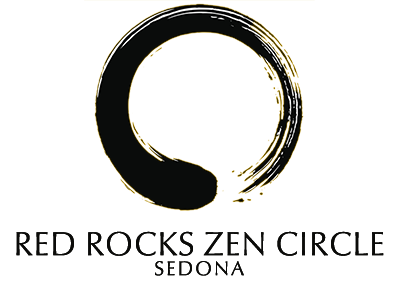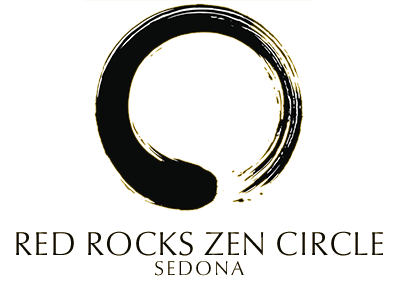Dharma Talk by Deirdre Eisho Peterson
Last week at our spring zazenkai I was feeling a lot of appreciation for everyone and for what we are able to create together as a sangha. As part of this I was also reflecting on the Three Treasures. They are a foundation of our practice, these Treasures, or Refuges, of Buddha, Dharma and Sangha.
It has been said that the role of a spiritual path is to link us to a tradition, a tradition that gives shape to our deepest intuitions. And the Three Treasures function this way. They remind us that we find our True Home in our awakened nature; in the truth that is expressed in the wisdom teachings; and with each other, in community.
In our liturgy, we sometimes chant, “Being One with the Buddha, Being One with the Dharma, Being One with the Sangha.” When we chant “Being One with the Buddha”, we affirm that our awakened nature is here now, its nature not different than the awakened nature of mind of the Buddha. This is one of the core teachings of Zen. Master Dogen tells us that practice and enlightenment are not two, not separated, not sequential. So our awakened mind (or our “awakening” mind, as Enkyo Roshi has often expressed it), is not something that we hope we might attain one day in the distant future. Being One with the Buddha is always in the present tense.
Being One with the Dharma is like this. The teachings only come off the shelf and become real when they are manifesting in our life. And that will look very different for each one of us. How we relate to suffering, our own and that of the world around us. How we begin to recognize the empty nature of things, and their mutability. To appreciate the beauty that comes with that, as well as the suffering that exists with loss and change. How these understandings come to change our relationship with our experience, from one of struggle and resistance to one of greater harmony, ease and freedom.
The Dharmas are boundless because life is continually presenting us with opportunities to see the truth of impermanence, suffering and emptiness. Opportunities for us to see that this is the nature of all things, that we ourselves are not immune or separate from these truths. The Dharmas include the profound teachings of our Zen ancestors and also include the ice cream melting, the blossoms mysteriously appearing on trees and the spring wind that blows them all away. Dogen says that mountains and rivers ceaselessly proclaim the truth. That is why it has been said, “The world exists to set you free.” On the surface, that statement doesn’t seem true, or even make much sense. The world sometimes delights us, but often confuses us, or saddens us with its violence and brutality. But if we see with our Dharma eye, we see through a different lens. We turn the light inward, and whatever we encounter, whatever we experience, is a chance for awakening to a truth.
Over time, the Dharma, the teachings, work on us in subtle ways. The poet Ryokan says:
Like the little stream
Making its way through mossy crevices
I, too, quietly turn clear and transparent.
The path of Soto Zen is often compared to walking in the mist, that little by little we become saturated with the teachings. The teachings that had once seemed strange or confusing begin to make sense, and to come together in a way that we can connect with. The Dharma becomes how we want to live, and we can’t go back to a life that is unconscious. A verse in the Book of Serenity says that “the cold clarity gets into our bones, and we can’t go back to sleep.”
The third of the Three Treasures is Sangha.
When I first came into practice, Zen seemed like a solitary path, and that probably appealed to me. And of the Three Treasures, Sangha was the one I didn’t immediately connect with. Buddha – that’s big. We all want that enlightened mind, even when we’re not sure what it really means. And the teachings – they are big too. Dogen, the ancestors, all the sutras.
But Sangha was different. Not lofty. Filled with all the messiness that we’d like to get away from. Yet Sangha is the field in which the teachings blossom and the mind starts to awaken. I think of Dogen’s analogy of the Harbor and the Weir. He was speaking of one of the precepts, but this might be a way to view Sangha. The community as sanctuary, and the community as a place of fertility and creativity, where the dharma can flower, we can flower.
Does Sangha always feel that way? Not always. There can be irritation, disagreements. Despite everyone’s good intentions, miscommunications can happen. All of us are in training, learning how to be with each other, to communicate, to act.
Nevertheless, do you remember the conversation that the Buddha has with Ananda? Ananda has had some realization of the importance of sangha, and enthusiastically declares to the Buddha, “Spiritual companionship must be no less than half of the spiritual life!” “Say not so, Ananda,” replies the Buddha. “Spiritual companionship is the whole, not the half, of the spiritual life.”
We can talk about the Three Treasures of Buddha, Dharma and Sangha individually, but on some level they are so closely-related, so inter-connected, so alive together right here, as to be One. They are the formless field of benefaction that nourishes and sustains us.
Offered by Deirdre Eisho Peterson, Hoshi
April 2013

